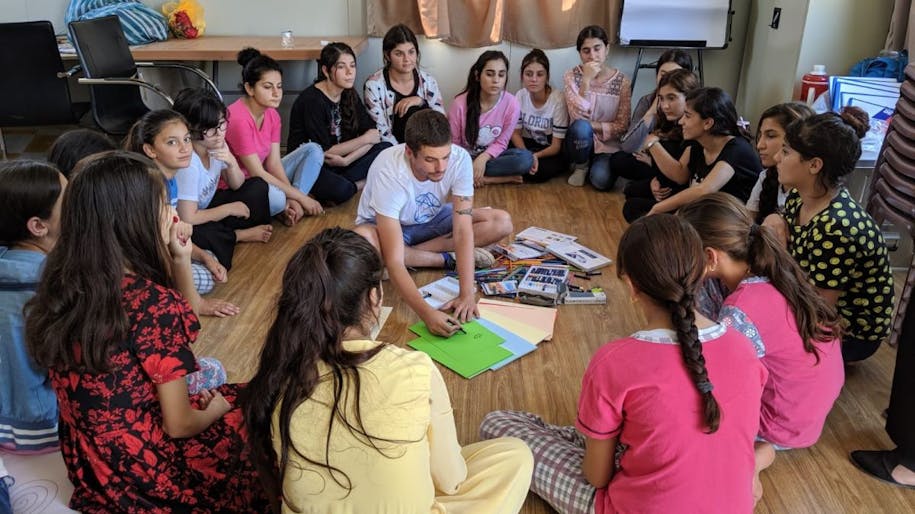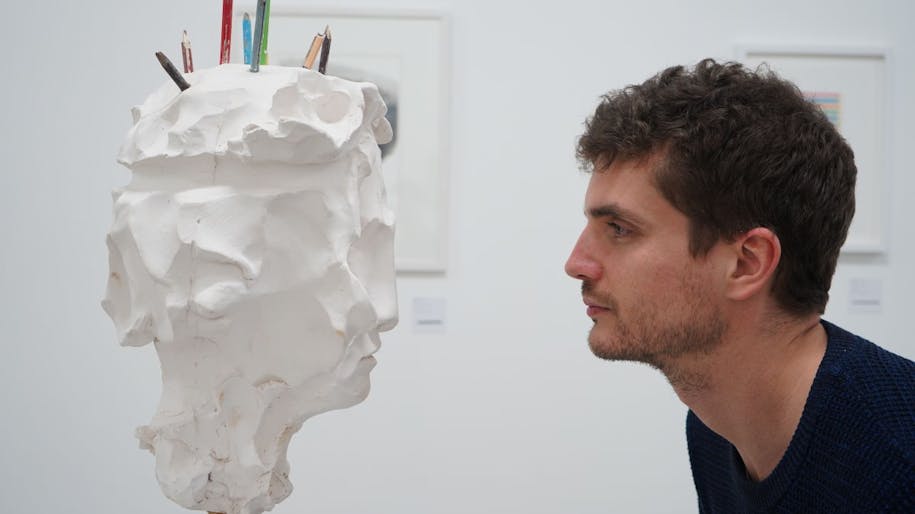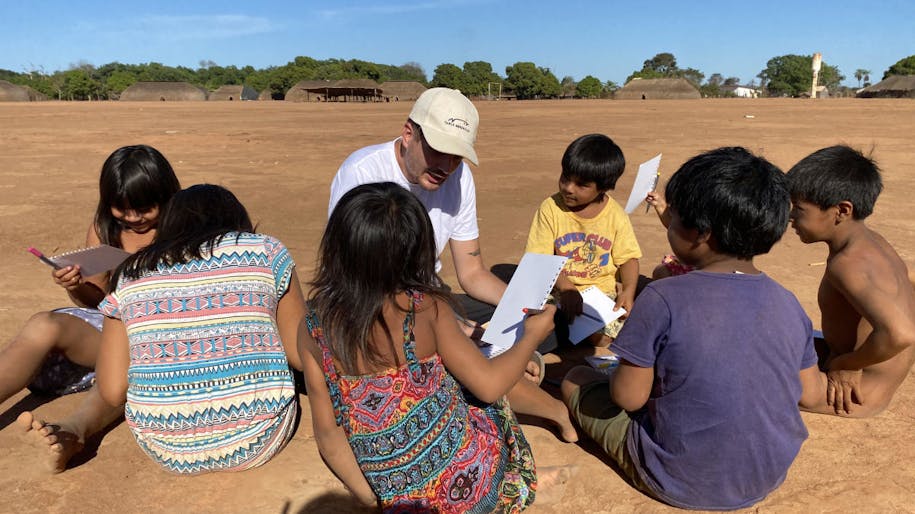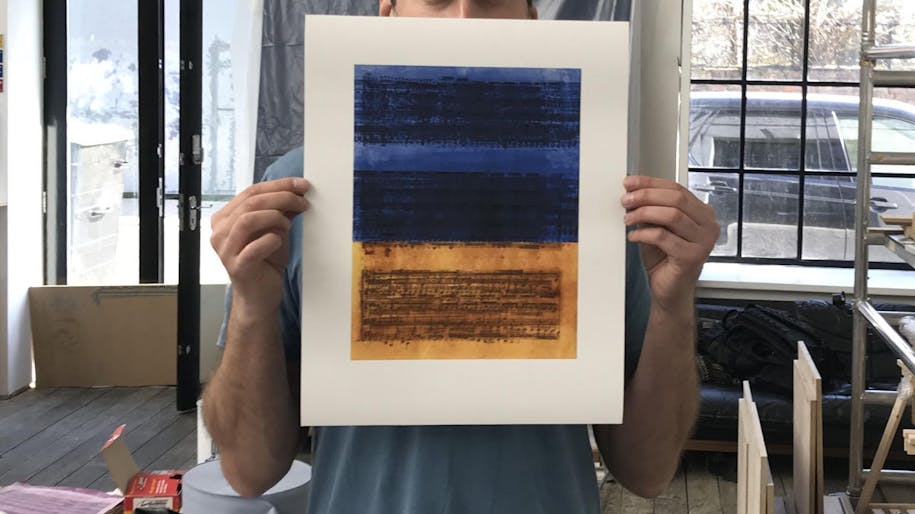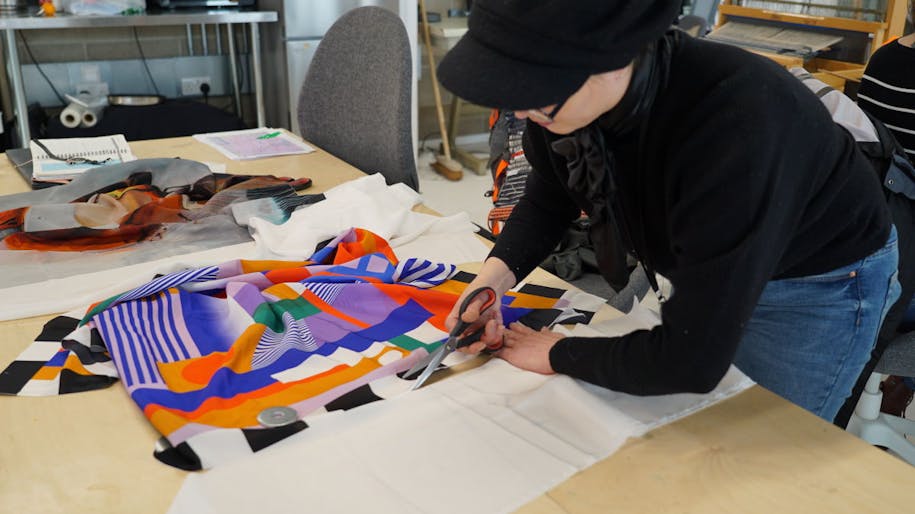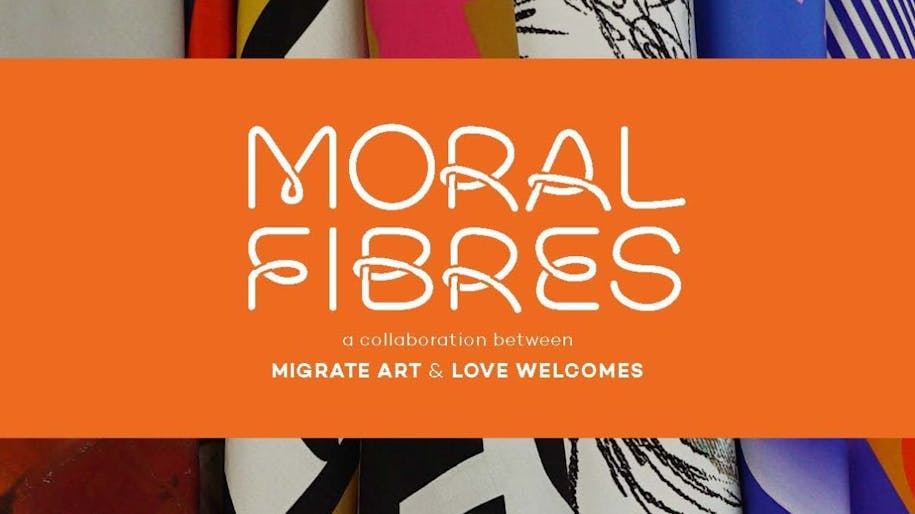
Meet the Tenants: Simon Butler, Founder of Migrate Art
Migrate Art uses the power of the art world to create social change. They develop highly creative fundraising projects with internationally renowned contemporary artists inspired by trips to displaced and vulnerable communities around the globe. Their work is underpinned by the belief that art has the ability to change the world and improve the lives of those most at risk in our societies. Their various projects, including Multicolour, Scorched Earth and ongoing print edition series, have raised over £1.25 million which is donated directly to their chosen charity partners.
Design District (DD): Hello Simon, thanks for taking the time to talk to us. Tell us a bit about your background, how did you create Migrate Art?
Simon: I previously worked in contemporary art galleries and with contemporary artists. I was deeply affected by a visit to the Calais Jungle in 2016 and wanted to help in some way. I returned after the Jungle had been razed to the ground and found colouring pencils in the soil where the school had once stood. I gathered them up and contacted well known contemporary artists and asked them to make original works of art using the pencils, which would be auctioned for charity. Once a couple of artists signed up to the project, more came on board and the project went from there. I organised an exhibition called Multicolour with these original works of art at Cork Street Galleries and held an auction at Christie's. It was a success and I was able to donate the proceeds to our charity partners - RefuAid, Refugee Committee Kitchen, and The Lotus Flower.
DD: You have worked on so many incredible projects, if you had to choose one, what would be your proudest moment to date?
Simon: I set Migrate Art up without any intention of it becoming my full time job, I just wanted to use my skills to help the refugee crisis in some way and raise some money for people that need help. To be here 5 years later and to have built it into something that employs people full time, has created a community of thousands of people across the world, and continues to support hundreds of thousands of vulnerable people every year gives me a huge amount of pride.
DD: What have been the biggest obstacles whilst heading Migrate Art?
Simon: When you are coming at things with a new way of thinking, it takes people time to get on board and understand that a more pioneering approach can actually work. Using creativity to help environmental and social causes now feels quite common, but back in 2016, there were far fewer people involved and interested in this space. We are now part of a network of incredible organisations that have been working in this space for quite a while that are getting incredible traction, such as our Design District neighbours Love Welcomes and Queercircle- it’s amazing to see the success that everyone is achieving.
DD: How do you select the artists and collaborators that you represent and work with?
Simon: For the first project, I contacted over 300 artists, and faced a significant amount of rejection. But thankfully some of them said yes, and I also called on a few artists I knew already, as I’d built up a good network from my background working in the contemporary art world. We’ve now reached the point where artists are getting in touch with us to work together, which is wonderful. Idris Khan contributed work to our previous Multicolour project, and contacted me to collaborate on the print for Ukraine that we released back in March which was an amazing success. We like working with people whose values align with ours, and there are a number of artists we have built strong relationships with over the years, as they share a passion for using art to improve the world.
DD: What do you think needs to change about the art world?
Simon: I truly believe art has the power to change the world and inspire social change, and giving a voice to the politically and socially disenfranchised is more important now than ever. Creating networks and connecting people throughout all areas of the art world, and using their knowledge and experience to facilitate this kind of change is imperative going forward. Our industry has a very powerful tool to improve social and environmental situations, but we need more people to use this tool in more meaningful ways. I would love to see the art world become less investment focused and more about the actual love of art and developing an eye and interest in artists. I’d also like to see more support for younger artists at the beginning of their careers, and more affordable studio spaces across the country - the cost of living crisis and already expensive rental costs is going to have a huge effect on them.
DD: Why did you choose Design District as your London base?
Simon: This actually came about from meeting Abi from Love Welcomes at a dinner my friend hosted. She told me about their space at the Design District and when we visited she told us there were still some spaces available - the rest is history!
DD: You have recently collaborated with Design District tenants Love Welcomes on the project Moral Fibres, how did this come about?
Simon: We think what Love Welcomes do is incredible and love to collaborate with like-minded organisations who are trying to do good in the world. Someone that works with me had the idea of inviting artists to design limited edition scarves which would then be sewn by the amazing team of refugee women at Love Welcomes as a way we could work with them. It’s been great to be situated so close to Love Welcomes while working on Moral Fibres, it’s our first time working with textiles of this scale and being able to pop over on a whim to chat with the team has been such an advantage!
DD: What’s next for Migrate Art?
Simon: I recently came back from spending three weeks in the Amazon Rainforest in indigenous villages and saw for myself the terrifying effects of deforestation on their communities. We are hoping to do a large-scale project with them, along the lines of our previous Multicolour and Scorched Earth exhibitions and auctions, and are waiting for permission from the village leaders. We also have a rolling programme of limited edition print launches with releases over the next six months including Chantal Joffe, Jules de Balincourt, and Rachel Whiteread. We see our collaboration with Love Welcomes, Moral Fibres, as a rolling project as well and will be releasing more limited edition scarves with different female artists next year. Watch this space!
Follow @migrateart and visit the launch of Moral Fibres on Wednesday 9th November at 6pm in Building C1's pop-up space.
